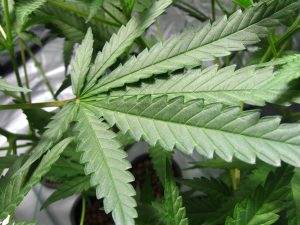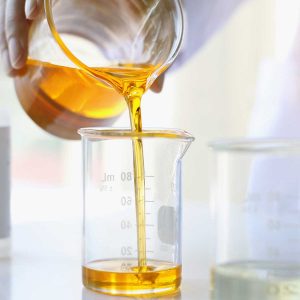Subtotal: $20.00
Sign Up Now
to get weekly deals and promotion!
Thank you!
You have successfully joined our subscriber list.

CBD products have risen in popularity throughout the last few years. The CBD market is swimming with various products, from oils to edibles and balms to bath bombs. CBD oil is one of the most popular products, and it is used for recreational as well as medicinal purposes.
CBD oil interacts directly with the endocannabinoid system and can offer physical and mental benefits without the high that is often associated with the cannabis plant.
Before you consider purchasing a CBD product, you should know a little about what makes a quality CBD product.
But where on earth do you begin? Right here, by finding out how CBD is extracted and how it can be a critical deciding factor when searching for the best CBD oil.

Where THC used to dominant the cannabis news, today, we have CBD taking the spotlight. Although part of over one hundred cannabinoids, CBD is currently at the forefront of the cannabis industry.
What caused this surge of interest in the cannabinoid?
Well, the key lies in CBD’s inability to cause any psychoactive effect like THC. THC was in the news, but all for the wrong reasons due to its psychoactive nature. On the other hand, CBD is a non-intoxicating substance and has even been given the green light by the World Health Organization.
It has only been in the past couple of years that we see a surge in clinical studies on the plant and on CBD in particular. Fortunately, this research allows an increasing number of people to distance cannabis and CBD from the propaganda-ish Hollywood stoner stereotypes. Instead of viewing CBD as a drug, more and more people realize that cannabis and CBD should be associated as a medicinal plant and substance.

CBD Isolate
This is an extraction of CBD only, no other cannabinoids, flavonoids, terpenes, or other substances.
Full Spectrum CBD
This is an extraction of all the inherent cannabinoids, flavonoids, terpenes, and other naturally occurring compounds that can assist with the benefits. These types of CBD products have become popular as more people realize the importance of the entourage effect. These products usually contain THC unless otherwise stated. Full-spectrum CBD products made from hemp will be THC free.
Broad Spectrum CBD
There is another type of CBD, known as Broad-spectrum CBD. This type of CBD is similar to full-spectrum but does not contain any THC (even if it is extracted from marijuana and not hemp). Broad-spectrum offers all the entourage benefits of full-spectrum, with zero THC.
Despite the above information, you should always check a brand’s third-party lab reports to ensure the results can back up the company’s claims.
There are specific cannabis strains that contain high concentrations of CBD and minuscule or trace concentrations of THC. Strains such as Charlotte’s Web has been specially bred for this very purpose.
What are Industrial Strains?
You may have heard the term ‘industrial hemp’ floating around, but what is it and what does the term ‘industrial strains’ refer to?
Several strains of industrial hemp can be used to extract CBD and other favorable compounds. Countries like China, India, and some in Western Europe have a thriving legal market for these strains.
Did you know that CBD derived from hemp is legal in all 50 US states? Well, besides being legal across the states, hemp-derived CBD is legal in most countries around the world. The past three years have seen a dramatic increase in CBD’s global market, and this financial nudge has allowed more research to uncover the intricacies of the plant.
Strains like Fedora 17 are one of these industrial hemp strains, and as such has negligible THC levels and high levels of CBD.
Now that we have those technicalities out the way, let us take a brief at the following 4 most common extraction methods for CBD products:
With this CO2 cannabis extraction method, 3 subcategories fall under the CO2 extraction umbrella:
The most commonly used method is the last one, the supercritical method, as it is the safest method and results in the purest product. For this article, we will focus on the supercritical extraction method and save the in-depth analysis for a separate article (so stayed tuned folks).
What is CO2 Extraction?
The power of pressured CO2 is harnessed to extract the desired phytochemicals. These compounds usually include cannabinoids and terpenes.
How does it Work?
With CO2 extraction, the pressurized CO2 becomes a solvent at specific temperatures and pressures. However, unlike traditional solvents, the pressurized CO2 does not carry any of the dangers that usually come along with the use of solvents.
CO2 extraction is considered one of the safest extraction methods, as the extractions remain pure, and the product quality is not compromised. However, this method can be more expensive as it includes the use of costly equipment to freeze the CO2 in gas form before compressing it in a supercritical state (which is a cold liquid state).
Did you know?
Decaffeinated coffee is made, well, decaffeinated, through CO2 extraction techniques.
Pros
Cons
Are you looking for a CBD extraction method to do at home?
Then you might find this method interesting…
The olive oil extraction method is one of the most popular extraction methods for DIY cannabis enthusiasts. The very first step in the olive oil method is called decarboxylation. The raw plant material needs to be decarboxylated, and despite this sounding like a complicated term, it is relatively simple.
What is decarboxylation?
The raw plant material needs to be heated to a specific temperature and for a particular length of time to activate the phytochemicals.
There are two recommended decarboxylation methods:
Once this decarboxylation is complete, you can add the olive oil and the heated plant media together and heat the mixture to 212F for at least 1 hour, but no more than 2 hours. And that is it- you have successfully performed an extraction. Of course, you may want to sift the plant material out of your oil before using it.
Pros
Cons
There are three solvents that are commonly used:
The Process

Pros:
Cons:
A Final Word
Why should you understand the different extraction techniques? Well, if you want to have a positive and effective experience with your CBD product, then you must understand how the products are made and can identify snake oil from the real deal.
You may have already noticed significant discrepancies in pricing; this is because there are some companies that, to hop on the profitable CBD bandwagon, use the most inexpensive methods to produce their products. While this may seem great for your budget, many of these products will have compromised quality that you simply cannot rely on.
Products made using the solvent method should be thoroughly tested via a third-party lab, and you should always check these independent test results before making your investment.
CO2 extraction methods are usually a sign of a good quality product, but again, always check the independent lab reports before purchasing any CBD or cannabis product.
If you are a hobbyist sitting at home trying to decide which is the best DIY method, you could opt for the olive oil method. While this method may have low yields, it is safe and straightforward to do. Olive oil extractions also provide a pure extraction, and we will cover more about DIY extractions for your very own cannabis creations in the near future.
If you are ready to get your CBD oil today, take a look at these CO2 extracted CBD products– there is something for everyone!